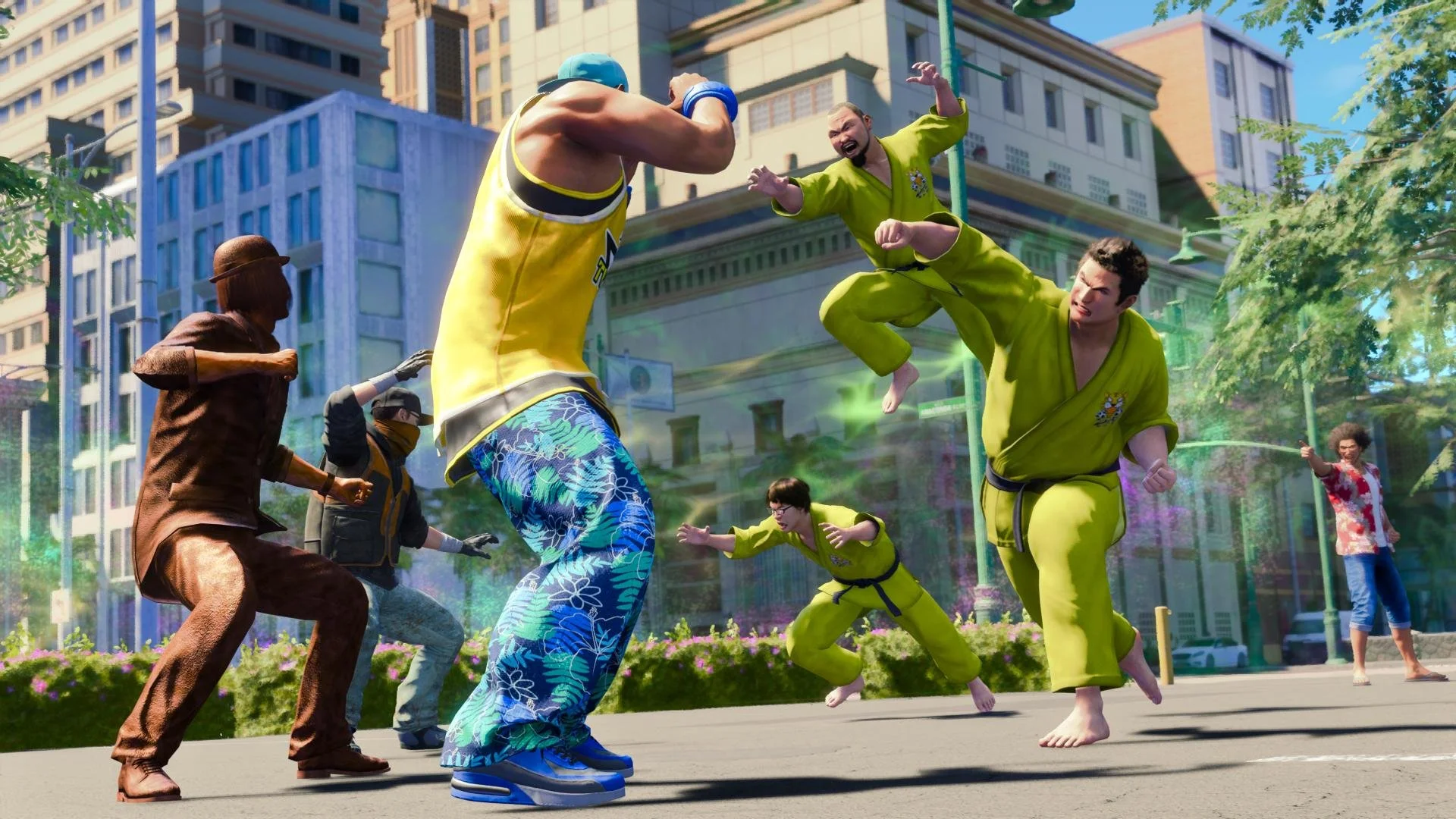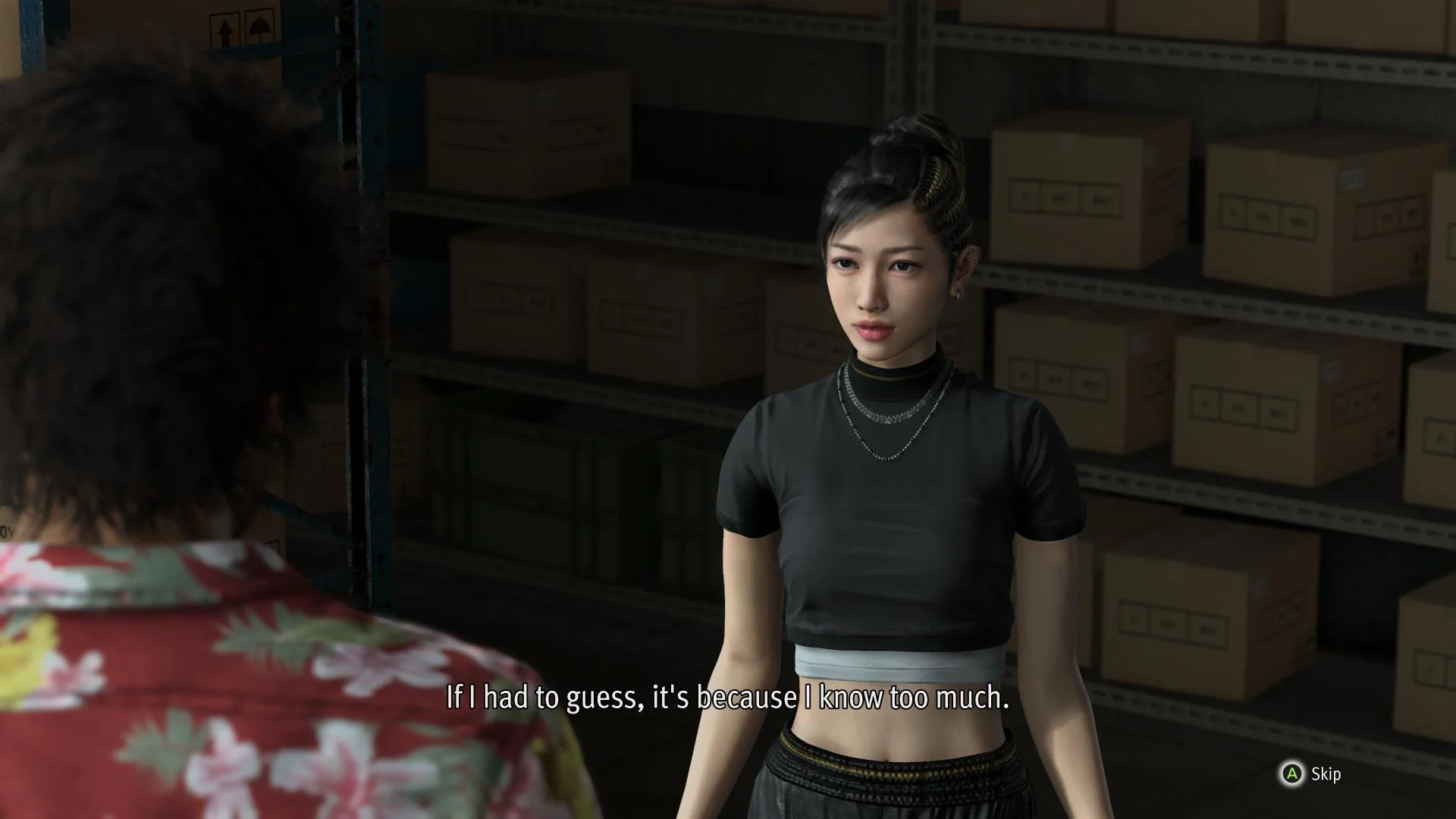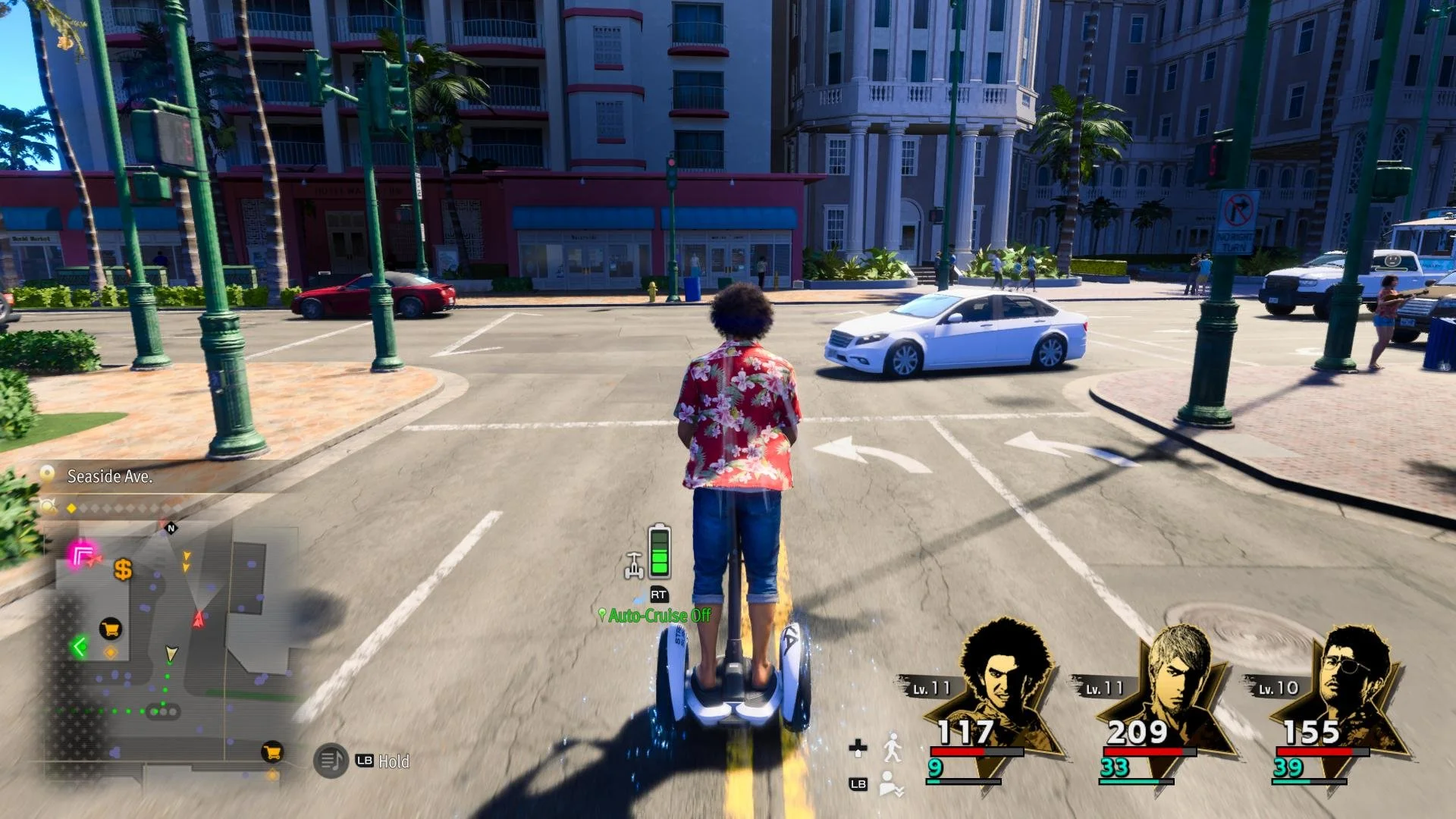Almost Infinite Possibilities
Like many of you, when Yakuza: Like a Dragon was released back in 2020, I was apprehensive about the move to turn-based gameplay and a new protagonist. That said, in the end, I fell in love with Ichiban Kasuga and his party of lovable rogues, so much so that I couldn’t wait for Like a Dragon: Infinite Wealth. The question is, does Infinite Wealth build on the solid foundation put in place by the previous game? I am happy to report that it does, but a couple of long-running series of frustrations remain.
Infinite Wealth begins with us catching up with Ichiban, Adachi, Nanba, and Seako some years after the events that unfolded in their last adventure. Unfortunately, these early chapters, while important to get us up to speed, drag on a little bit too long. This is something that often happens in this franchise; early pacing issues. Eventually, after Ichiban’s life is seemingly ruined in Japan, he finds out that his mother is still alive and in Hawaii. Not only this, but she wants to see him. This then sends Ichiban to Hawaii on his own as his friends stay behind. But in true Ichiban style, he makes new allies and finds some old ones to accompany him on his new adventure. First up and perhaps most importantly, we have the return of Kazuma Kiryu, long-running series protagonist. Secondly, we have Tomizawa, a taxi driver turned gang member whose introduction to Ichiban is very funny in hindsight. We also have Chitose, a young girl from a rich Japanese family who is in Hawaii for unknown reasons and isn’t what she initially seems to be.
Back to Kiryu for a second; he is the secondary protagonist of this game and not just a supporting character. Early on, you find out that he has cancer, and that changes the whole mood of the game. Ichiban and the gang spend lots of time trying to motivate him to keep fighting when he seems to have given up. This results in Kiryu embarking on a very personal journey of reflection alongside the main narrative. Eventually, Kiryu ends up with his own party as he returns to Japan, while some familiar faces return. All in all, you will have ten characters at your disposal by the end of the game, and some of them get much more screen time than others…I want more Nanba, please! It’s disappointing that lots of this Kiryu content is optional side stories or interactions people can miss. Not only is Kiryu a character who deserves more than that, but this content is great, especially for long-time series players like me. That said, the most important moments of his journey do play out within the main quest itself, so be rest assured you are getting some solid time with Kiryu.
So how is combat, and does Kiryu translate well to a turn-based game? Well, each character has a job specific to them, but as you may expect, you can eventually change jobs by unlocking them at a tourist guide-like shop called Alo-Happy. The first of these jobs is Aquanaut, a surfer-themed class that is unlocked for free the first time you visit the shop as part of the story. Other jobs require a certain personality level in Ichiban’s different personality traits, along with some in-game cash to pay for the tourist activities. These are, unfortunately, just cutscenes rather than actual activities you can play.
You may be wondering how you level up personality traits? The good news is these traits are upgraded as you do things like play mini-games, engage with side missions, or just by making dialogue choices during drink links with your party. Some jobs return from Yakuza: Like a Dragon with some new ones, Hawaii-appropriate roles thrown in, like the aforementioned Aquanaut or one of my favorites, the Geodancer, a hula dancing-themed supportive class for your female party members. Each job has advantages and disadvantages, so taking the time to find the right mix to suit your playstyle is part of the fun. All that said, I left most of my party members with their default specific jobs, Ichiban as a Hero, Kiryu as Dragon of Dojima, and so on… but I did make Chitose a Geodancer, and later in the game, I switched Saeko from Barmaid to Night Queen.
Regardless of which jobs you have selected, combat being turn-based remains mostly the same on a functional level, at least. You select actions with the face buttons, Y for Skills, which costs MP, X for using any Items, and A for basic attacks. Kiryu functions slightly differently, as before you select the action for his turn, you can use the D-Pad to change to any of his three fighting styles. These fighting styles are Rush, allowing you to make multiple basic attacks in a row before the next turn, Heat which can turn your basic attacks into his signature heat actions when in certain positions, and Beast which is a strong grappling-based style good for breaking enemies who are in a guarded, defensive position. It’s just important to note that these fighting styles only impact basic attacks, and they don’t have any effect on any skill-based attacks that use MP.
Everyone else has one basic attack and then their job-based skills. As you might expect, as you level up your job rank, you unlock more skills. To those of you who played Yakuza: Like a Dragon, it might sound like not much has changed outside of Kiryu’s unique options, but that isn’t the case. For example, you can now move around within a designated area during combat; this area gets bigger as your character level increases. This isn’t the only thing that makes character level more important this time around. The balance between character level and job rank has switched. In Yakuza: Like a Dragon, character level had very minimal impact on your stats, with job rank being much more important to increasing these, but it led to the problem that changing job roles would unnecessarily weaken your character more than intended. This time, in Infinite Wealth, job rank is important to unlock skills and does see some stats boosts, but your character level is where stats mostly increase. This makes job changes much less punishing and encourages experimenting as you play.
Some other meaningful improvements to combat include enemies you aren’t targeting will no longer randomly trip you up or block your attacks. All party members can now use and pick up weapons in the environment, such as street signs or bicycles. You can do combo moves with party members when initiating a basic attack while in their proximity. Thankfully, the UI elements are also improved, now indicating the exact area or direction of skill-based attacks, removing the guesswork of the previous game. Oh, how could I forget you also get these tag team moves one for each character in your party. These moves are unlocked by improving your bond with party members, which you do through drink links, random conversations in the open world, and more. In combat, you charge these moves up by performing any attack; once a character's infinity symbol is filled on their turn, you can press Right Trigger to activate a tag move. This results in a fun cutscene like the ones you get when using some of your stronger skill moves.
If all party members' tag move gauges are full at the same time, on Ichiban’s turn, you can execute an Ultimate Tag Move, which is even more powerful. At a certain point in the game, Kiryu really comes into his own, arguably becoming my favourite character in combat in the process, as his Right Trigger ability allows him to break the game for a period of time, turning it into a real-time action game like the previous titles in the series. This allows him to destroy multiple enemies very quickly and it can really turn the tide of some fights.
We’ve discussed new characters, story, and combat, but one thing I haven’t mentioned yet is side content. I could spend thousands of words reviewing the side content in this game as there is almost another game’s worth here, but I’m not going to do that, so let me explain.
Firstly, you have the sub-stories we have all come to know and love from the franchise and these are exactly what you’d expect in the best way. For example, one of my favorites is an early side quest that involves a man randomly dropping ice, but as you get to know his story it’s much deeper and relatable. Even if it does end with you using diapers to make snow… it nearly made me cry. While the side-stories are structured in the same way we have had them before, the fact they take place in a whole new location allows for exploration of areas we haven’t seen in a Yakuza or Like a Dragon title before.
Secondly, we have mini-games, which are always fun; this time, we see the inclusion of a Tinder app dating sim-type mini-game and a crazy taxi-inspired crazy eats fast food delivery game. While your mileage will vary on what you think of them, they don’t feel like half-assed attempts to create something fun to do. For those wanting the return of the live-action girls the series is known for, then you’ll want to take on the dating mini-game as it features everything you could possibly want there.
Thirdly, RGG decided to make two other video games and put them into this one title. Sujimon returns from the previous game with a much-expanded system allowing for battle, tournaments, and earning badges. It also has a decent, though predictable storyline throughout the mode as you earn these gym badges. I’m not joking when I say this is the most fun I’ve had with a Pokémon style game. It’s well worth the time, and depending on what Sujimon you capture and how you level them up by feeding them Sujimunch or other versions of themselves to evolve them, this storyline and mode could easily take fifteen to twenty hours by itself. It truly could be a game of its own, and it’s not the only mode in Infinite Wealth like that.
This brings me to Dondoko Island; that’s right, you’ve seen the trailers. It’s essentially Animal Crossing meets Yakuza, and it absolutely could be its own game. Like Sujimon, it has a storyline involved and more story than Animal Crossing itself has ever had. It plays largely like Animal Crossing. You have to collect resources and build houses and attractions to keep your guests entertained. As you do this, you can eventually invite guests to stay for a few days and earn dondoko bucks, which you can use to improve your island further or convert into dollars to use back in Hawaii. If you want to improve your island, you will have to engage in a somewhat stiff real-time combat completely different to the main game, only using Ichiban’s baseball bat against these rubbish-dumping pirates to clear out areas, which will give you more space to build.
While Dondoko Island is a mostly optional mode, the main story will force you to do the introduction sequence, after which you don’t have to play it again. If you do choose to engage with it, however, you could easily lose dozens of hours not only making your island the best it can be but also earning dollars to use in the main game; that’s because, until the late game, where you earn a lot of cash from combat, Dondoko Island is your primary source of income. I spent about thirty hours in this mode, and, as I have mentioned before, it could so easily be its own game, but I’m sure some players will miss the more simplistic, less involved Inchiban Confections Mini Game from Yakuza: Like a Dragon.
I could review Sujimon or Dondoko Island by themselves, but as part of this already fantastic package, I’ll summarise them like this: They are great and only make the game better. Side content, in general, does lead me to one long-standing franchise issue that remains, however: inconsistent presentation levels.
If you’ve played a Yakuza game before, you know exactly what I’m talking about. The main quests will be beautifully presented with full-voiced high-end cutscenes, with the likes of Yong Yea voicing Kiryu or Danny Trejo as one of the villains. All that is great! The problem is in the side content, where some stuff will have cutscenes and full voice acting and other quests of a similar type will have no voice acting whatsoever. While this doesn’t ruin the game by any means, this inconsistency and not knowing what level of presentation I will get outside the main story is distracting. Especially when you’ll have some things like drink links that will be voiced and then have the final scenes be text only. I would rather all side content was text only than this inconsistent presentation.
All that being said, the game looks as wonderful as ever, especially in cutscenes, and it also has the best soundtrack in the series. Of course, it uses many franchise staple themes, but there are twists and new pieces thrown in, which are all delightful. Is there a vast visual improvement from the previous game? No, but it definitely looks better and much of that has to do with having a whole new environment to explore. The presentation is once again top-notch when it wants to be; I wish it had a bit more consistency throughout the game, however.
Ultimately, Like A Dragon: Infinite Wealth is a triumph in storytelling and a strong example of how to improve a game significantly from the previous entry. Interesting new characters, strong performances, the new setting of Hawaii, and gameplay improvements combined with an almost infinite amount of things to do, resulting in arguably the best game in the franchise and certainly RGG studio’s best turn-based effort to date.
Developer - Ryu Ga Gotoku Studio. Publisher - Sega. Released - January 25th, 2024. Available On - Xbox One/Xbox Series X/S, PS4, PS5, PC. Rated - (M) - Blood, Intense Violence, Partial Nudity, Sexual Themes, Strong Language Platform Reviewed - Xbox Series X. Review Access - Review code was provided by the publisher for the purpose of this review.


















I’m Jordan I have a background in game design and am deeply passionate about accessibility in gaming. My favourite games/franchises include Shenmue, Red Dead Redemption 2, Plague Tale: Requiem, Metal Gear Solid 3, Yakuza, Splinter Cell, and Assassin’s Creed.